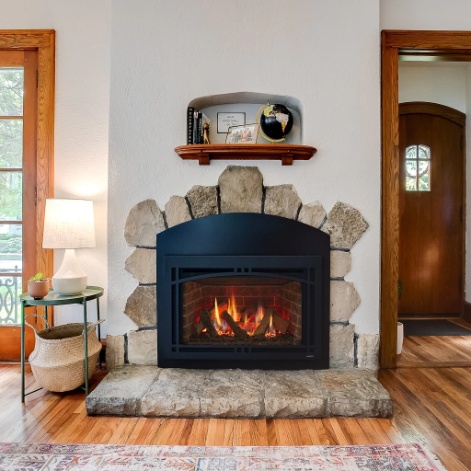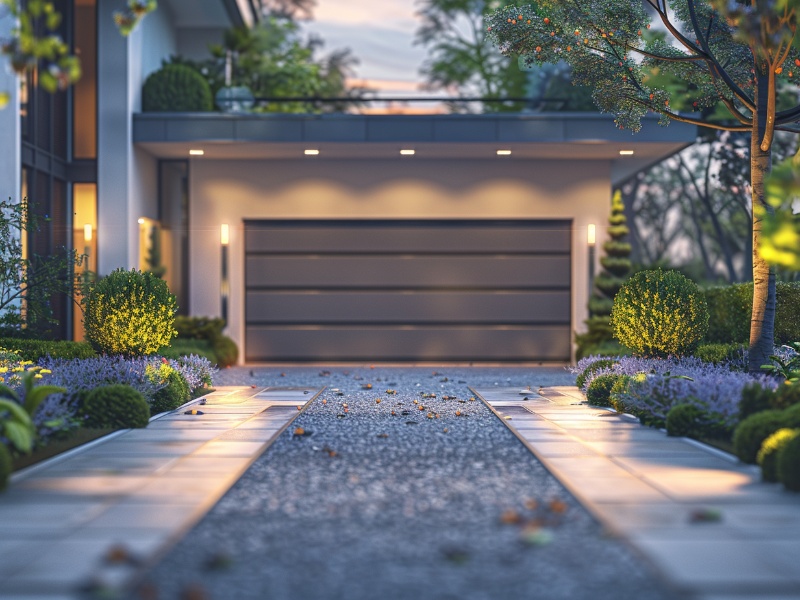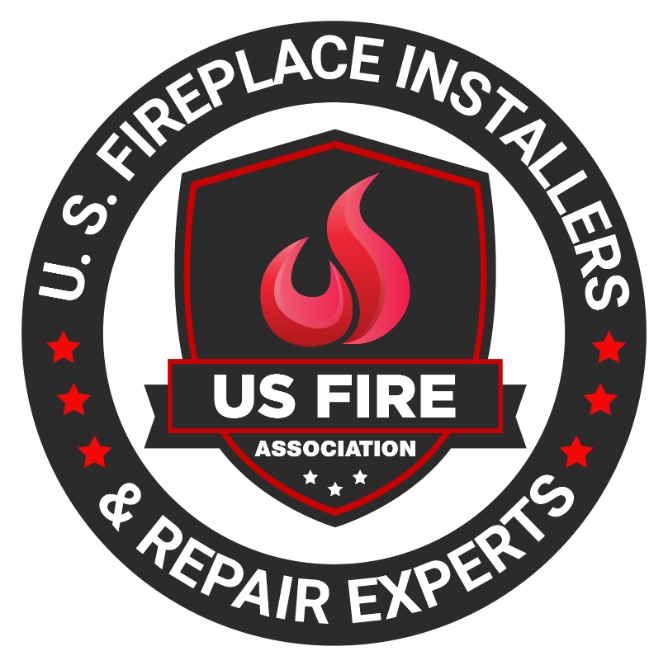Table of Contents
- 1 What is an Electric Fireplace?
- 2 How Does an Electric Fireplace Work?
- 3 What Are the Different Types of Electric Fireplaces?
- 4 What Are the Benefits of an Electric Fireplace?
- 5 How to Make an Electric Fireplace Look Real?
- 6 What Are Some Common Mistakes When Trying to Make an Electric Fireplace Look Real?
- 7 Frequently Asked Questions
Electric fireplaces have become a popular choice for homeowners looking to add warmth and ambiance to their space without the hassle of a traditional wood-burning fireplace.
In this article, we will explore what electric fireplaces are, how they work, and the different types available. We will also discuss the benefits of owning an electric fireplace and provide tips on how to make it look as realistic as possible.
Discover how to create the cozy atmosphere of a real fireplace with an electric alternative by learning about common mistakes to avoid.
What is an Electric Fireplace?
An electric fireplace is a modern home decor accessory that replicates the visual appeal of a traditional fireplace while providing a cozy ambiance and warmth to any living space.
These fireplaces come in a variety of designs, ranging from sleek and contemporary to classic and rustic. The realistic flames and ember bed in electric fireplaces create a charming focal point in a room, adding a touch of elegance and sophistication. They are often designed with mantels, shelves, or TV stands to further enhance their visual appeal and blend seamlessly with different decor styles. Electric fireplaces offer the perfect balance between functionality and aesthetics, making them a versatile addition to any home.
How Does an Electric Fireplace Work?
The working mechanism of an electric fireplace involves advanced technology that utilizes a heating element within a firebox to generate artificial flames and provide warmth, requiring simple installation for immediate use.
This heating element, often in the form of infrared quartz or electric coils, emits heat when electricity passes through it, simulating the warmth of a traditional fireplace. The firebox, typically made of durable materials like metal or tempered glass, is designed to reflect the light generated by the heating element, creating the illusion of dancing flames. Installation usually involves plugging the fireplace into a standard electrical outlet, making it a convenient and space-saving option. Regular maintenance includes cleaning the exterior, checking wiring for safety, and ensuring proper ventilation for efficient operation.
What Are the Different Types of Electric Fireplaces?
Electric fireplaces come in various types, including wall-mounted, freestanding, and insert models, each offering unique design features and installation options to suit different home decor preferences.
Wall-mounted electric fireplaces are favored for their sleek, modern aesthetics and space-saving design, making them ideal for smaller rooms or contemporary interiors. They provide a chic focal point without taking up floor space, creating a visually appealing accent on any wall.
Freestanding electric fireplaces, on the other hand, offer versatility in placement, allowing you to enjoy the cozy ambiance in any room without the need for installation. With realistic flame effects and adjustable heat settings, these models bring both warmth and style to your living space.
Insert electric fireplaces are designed to fit into existing traditional fireplaces, offering a convenient way to upgrade the look and functionality of your home. They provide a seamless solution for converting a conventional fireplace into an efficient heating source while maintaining a classic aesthetic.
Wall-mounted
Wall-mounted electric fireplaces provide a sleek and contemporary design solution, ideal for space enhancement and adding a stylish focal point to any room.
Their minimalist and space-saving design makes them perfect for both small apartments and spacious homes, seamlessly integrating with various decor styles. These fireplaces offer a modern touch while providing warmth and ambiance without the need for a chimney or venting.
Whether you prefer a cozy rustic vibe or a chic urban aesthetic, a wall-mounted electric fireplace can elevate the visual appeal of your living space. They come in a range of sizes, finishes, and flame effects, allowing you to customize them to suit your interior design preferences.
Freestanding
Freestanding electric fireplaces offer a classic and cozy ambiance, reminiscent of traditional hearths, making them a popular choice for creating a warm and inviting atmosphere in living spaces.
These charming fireplaces evoke a sense of nostalgia, harkening back to simpler times when gatherings around the hearth symbolized comfort and togetherness. The crackling sound of the faux flames adds a touch of authenticity, enhancing the overall homely feel. Their elegant designs seamlessly blend with traditional decor, infusing the room with a timeless allure. The gentle warmth they emit not only provides physical comfort but also wraps the space in a welcoming embrace, perfect for relaxation and unwinding after a long day.
Inserts
Insert electric fireplaces are designed to fit into existing traditional fireplace openings, providing efficient heat output and minimal maintenance requirements for convenient use.
With advanced heating technology, these inserts offer customizable heat settings to ensure optimal warmth and comfort in any room. In addition to their heat efficiency, insert electric fireplaces are also effortless to maintain, eliminating the need for messy cleanup associated with wood-burning fireplaces. The sleek designs and remote control operation make it easy to enhance the ambiance of your living space with just a touch of a button. Say goodbye to the hassle of chopping wood and cleaning up ash, and say hello to a hassle-free, modern fireplace experience.
What Are the Benefits of an Electric Fireplace?
Electric fireplaces offer numerous benefits, including energy-efficient heating, enhanced ambiance creation, and easy installation for a quick transformation of any living space.
One of the key advantages of electric fireplaces is their energy efficiency, which allows them to provide warmth without wasting energy. This not only helps in reducing utility bills but also creates a more sustainable and eco-friendly heating solution.
The ability of electric fireplaces to enhance ambiance through realistic flames and customizable settings adds a touch of coziness to any room. The simple installation process further adds to their appeal, making it convenient for homeowners to upgrade the aesthetics of their living space effortlessly.
How to Make an Electric Fireplace Look Real?
Achieving a realistic look for your electric fireplace involves various tricks and techniques, such as enhancing the flames, adding heat output, and incorporating sound effects for an authentic ambiance.
To enhance the visual appeal of your electric fireplace and make it look more real, consider using flame effects that mimic natural fire movements. Look for models that offer adjustable flame brightness and color options to create a more dynamic and realistic fire experience.
Integrating heat elements into your electric fireplace can add a sense of authenticity by providing warmth similar to a traditional fireplace. Don’t forget about the importance of sound effects – incorporating crackling fire sounds can further enhance the lifelike environment and make it feel like you’re truly sitting by a cozy fire.
Choose a High-Quality Model
Selecting a high-quality electric fireplace model is crucial to achieving authenticity and implementing effective design hacks for enhancing the overall visual appeal of the fireplace.
Investing in a premium electric fireplace ensures that the flames flicker realistically, resembling a genuine wood-burning fire. This authenticity creates a warm and inviting atmosphere in any space.
To further elevate the visual allure, consider incorporating design elements like a sleek mantel or a stone facade for a sophisticated touch. These design hacks not only enhance the aesthetic of the fireplace but also blend seamlessly with various interior styles, adding a touch of elegance to the room.
Add Realistic Flames
Enhancing the appearance of realistic flames on your electric fireplace can significantly improve its visual appeal and create a more immersive experience, incorporating advanced visual upgrades.
By incorporating techniques such as adjusting the flame color to a warmer hue and increasing the flickering intensity, the flames on your electric fireplace can replicate the dance and glow of real flames.
Adding depth through layered flame effects and ember beds can create a more realistic and dynamic appearance, enhancing the overall ambiance of your space.
These visual enhancements not only elevate the aesthetic appeal of your electric fireplace but also contribute to a cozy and inviting atmosphere, perfect for creating a soothing and relaxing environment.
Incorporate a Mantel
Adding a mantel to your electric fireplace offers innovative solutions for blending the fireplace into your home decor scheme while providing a stylish focal point for the room.
By incorporating a mantel with an electric fireplace, you can elevate the aesthetic appeal of your living space effortlessly. The mantel serves as a versatile design element that not only complements the interior decor but also creates a cohesive look. With various styles and finishes available, you can choose a mantel that seamlessly integrates with your existing furnishings, enhancing the overall ambiance of the room. The mantel provides a platform for displaying decor items, family photos, or seasonal decorations, adding a personalized touch to your home.
Use Decorative Accents
Utilizing decorative accents around your electric fireplace can enhance its visual aesthetics and create a cohesive design scheme that complements the fireplace’s ambiance and style.
For a touch of elegance, consider placing a large mirror above the fireplace to reflect light and visually expand the space.
Adding a statement piece like an art sculpture or a framed artwork can draw attention to the focal point of the room.
Incorporating natural elements such as potted plants or a vase of fresh flowers can bring a sense of freshness and vitality to the area.
Experimenting with different textures like metallic accents, textured fabrics, and decorative candles can add depth and personality to the overall decor.
These simple yet effective additions can transform your electric fireplace into a stylish centerpiece of your living space.
Add Heat
Integrating heat elements into your electric fireplace not only enhances its authenticity. It also contributes to space enhancement by providing warmth and comfort to the room.
The heat output from the fireplace creates a cozy atmosphere that is perfect for relaxing or entertaining guests. By adding heat features, you can enjoy the flickering flames while also feeling the soothing warmth radiating throughout the space. This combination of visual appeal and practical functionality elevates the overall ambiance of the room. They make it a versatile focal point for both aesthetic and comfort purposes.
Heat elements in your electric fireplace add an element of relaxation and coziness that enhances the overall experience. This is true whether you’re unwinding after a long day or hosting a gathering.
Include Sound Effects
Adding sound effects to your electric fireplace setup is a cost-effective method to boost the ambiance’s authenticity. It creates a more immersive experience, leading to a complete transformation.
You can transport yourself to a cozy cabin in the woods right in your living room. This is accomplished by adding crackling fire sounds or gentle wood crackles. These subtle auditory cues can evoke a sense of warmth and relaxation, making your space feel more inviting. Opting for electric fireplace sound effect devices or apps can offer a variety of options to suit your preferences. This is all without the cost and maintenance of traditional wood-burning fireplaces. With the right sound effects, you can elevate your home’s atmosphere without breaking the bank.
What Are Some Common Mistakes When Trying to Make an Electric Fireplace Look Real?
When attempting to make an electric fireplace look real, there are some common mistakes. These include using poor quality materials, neglecting to incorporate heat elements, and failing to consider scale and proportion.
To enhance the realism of an electric fireplace, you must pay attention to the material quality used in its construction. Opting for high-quality materials that mimic the look and feel of real wood or stone can elevate the overall appearance. Ensuring that the fireplace includes heat elements can create a convincing illusion of a traditional fireplace. These elements include realistic flames and ember beds
When focusing on design considerations, one should pay attention to details like scale and proportion. This ensures the fireplace complements the space harmoniously. In addition, it avoids visual discrepancies that could detract from the authenticity.
Using Poor Quality Materials
Opting for poor quality materials when enhancing your electric fireplace can hinder the overall renovation process. It can also detract from the authentic look you aim to achieve, compromising the visual appeal of the fireplace.
Subpar materials may result in a final outcome that lacks durability and finesse, diminishing the charm of your upgraded fireplace. To ensure a successful renovation, consider quality materials such as authentic stone veneer, reclaimed wood mantels, or high-grade metallic finishes. These choices not only offer longevity but also enhance the aesthetic appeal, creating a sophisticated and true-to-life fireplace design. Investing in premium materials is crucial for a seamless renovation. It will elevate the overall ambiance and visual impact of your electric fireplace.
Not Considering Scale and Proportion
Neglecting to consider scale and proportion when enhancing your electric fireplace can lead to imbalanced room aesthetics. It can also detract from the overall visual appeal of the fireplace setup. This disrupts the harmonious design flow.
Incorporating proper scale and proportion into your electric fireplace design is crucial for achieving a visually pleasing space. These elements play a significant role in creating a sense of balance and harmony within the room.
It’s essential to carefully select elements that are proportionate to the size of the fireplace and the surrounding area. This will ensure that your fireplace enhancements complement the rest of the decor. Paying attention to details helps in maintaining a cohesive and aesthetically pleasing room design. Details include the size of the mantel, the height of decorations, and the overall composition.
Neglecting to Add Heat
Failing to add heat elements to your electric fireplace setup can hinder the creation of a cozy ambiance. It also limits the overall transformation potential. You will miss out on the essential warmth and comfort provided by the fireplace.
Incorporating heat features into your electric fireplace not only enhances the visual appeal. It also plays a crucial role in setting the right mood in your living space. The warmth radiated by the fireplace adds physical comfort. In addition, it creates a welcoming atmosphere that invites relaxation and cozy conversations. Neglecting the heat elements can lead to a lackluster ambiance. This will deprive you of the magical blend of visual beauty and soothing warmth that a well-equipped electric fireplace offers.
Forgetting About Sound Effects
Overlooking the incorporation of sound effects can limit the visual tricks available to create a realistic ambiance. This detracts from the immersive experience and overall authenticity.
By adding the crackling sound of burning wood or the hum of a fan you can enhance the overall ambiance. These sound effects serve as a natural complement to the visual elements. As a result, the senses are fooled into believing in the presence of a real fire.
To integrate sound effects effectively, consider using a soundbar or speakers strategically placed near the fireplace for optimal audio distribution. Adjusting the volume and adding subtle variations in the sounds can further elevate the realism of your virtual fireplace experience.
Frequently Asked Questions
1. What is an electric fireplace?
An electric fireplace is a home decor accessory designed to replicate the look and warmth of a traditional fireplace. It comes in various designs and integrates realistic flames and an ember bed to create a cozy ambiance.
2. How does an electric fireplace work?
An electric fireplace uses a heating element and advanced technology within a firebox to generate artificial flames and warmth. It’s typically plugged into a standard electrical outlet for easy installation and operation.
3. What are the benefits of an electric fireplace?
Electric fireplaces offer energy-efficient heating, enhance ambiance with realistic flames, and require easy installation. They provide a convenient and stylish way to add warmth to any space without the complexities of a traditional fireplace.
4. How can you make an electric fireplace look real?
To make an electric fireplace look real, use models with adjustable flame brightness and color. Be sure to add heat elements for authenticity. Finally, incorporate sound effects of crackling fires for a complete experience.
5. What are some common mistakes when trying to make an electric fireplace look real?
Common mistakes include using poor quality materials, as well as neglecting to add heat elements or sound effects. In addition, another mistake is failing to consider scale and proportion in the fireplace’s design and placement.
6. Why is choosing a high-quality model important for an electric fireplace?
Selecting a high-quality electric fireplace model is essential for achieving realistic flames and a durable, visually appealing setup. Premium models provide a more authentic look and feel, enhancing the overall ambiance of your space.
Latest Articles

What Is An NG (Natural Gas) Indicator And Why You Need It For Your Fireplace
Table of Contents1 Understanding Natural Gas Fireplaces2 What is an NG Indicator?3 Importance of NG Indicators for Safety4 Types of NG Indicators5 Installation and Maintenance of NG Indicators6 Signs of a Faulty NG Indicator7 Frequently Asked Questions Natural gas fireplaces are a favored option among numerous homeowners due to their convenience and effectiveness. But, what is an NG (Natural Gas) indicator and why you need it for your fireplace? It is imperative to comprehend how they function and the significance of having an NG (Natural Gas) indicator for safety purposes. This article delves into the definition and significance of NG indicators. We will discuss the potential hazards associated with the absence of one and the various types of indicators accessible. Also, we will discuss installation and maintenance recommendations, and methods to recognize and rectify issues with malfunctioning indicators. Stay well-informed and ensure the safety of your home by referring to this exhaustive guide. Understanding Natural Gas Fireplaces Natural gas fireplaces serve as an efficient and convenient heating option for numerous households. They utilize natural gas as a fuel source to deliver consistent warmth and ambiance. How They Work and Why They Need NG Indicators The operation of natural gas fireplaces involves igniting natural gas to generate heat. This process requires diligent monitoring to ensure both safety and efficiency, a task facilitated by the use of NG indicators. NG indicators play a critical role in detecting potential gas leaks. They enable residents to promptly address and mitigate any associated hazards. Through continuous monitoring of gas levels and providing timely warnings and alerts, NG indicators uphold a secure indoor environment. It is imperative to ensure that these indicators function properly to facilitate the effective operation of natural gas fireplaces. This helps mitigate the inherent risks linked to gas leaks. What is an NG Indicator? An NG indicator is a specialized device equipped with advanced sensors and technology. It is specifically designed to detect natural gas leaks and monitor gas pressure in appliances, such as fireplaces. Definition and Purpose The NG indicator functions as a detector that monitors gas appliances for potential leaks. It provides essential functionality to ensure safety in households utilizing natural gas. These detectors play a crucial role in protecting residences by notifying occupants of dangerous gas leaks long before they escalate into perilous situations. Through continuous monitoring of gas levels in the vicinity, NG indicators offer an additional layer of protection. This is particularly important in properties that rely on gas-operated fireplaces or stoves. These devices not only help avert potential disasters but also enhance the overall peace of mind of homeowners. They assure them that their living spaces are equipped with reliable safety features. Importance of NG Indicators for Safety Natural gas indicators are essential for maintaining safety in households equipped with natural gas appliances. These devices serve as a proactive measure to promptly detect gas leaks. This offers homeowners a sense of security and assurance. Potential Dangers of Not Having an NG Indicator The absence of an NG indicator in residences equipped with natural gas appliances can pose significant hazards. This includes the risk of undetected gas leaks , carbon monoxide poisoning , and pilot outages that may lead to dangerous situations. These potential risks can profoundly impact indoor air quality. They directly influence the health and safety of individuals residing in the household. Undetected gas leaks can go unnoticed, gradually permeating the air and creating a potentially explosive environment. Insufficient ventilation from undetected exposure to carbon monoxide can lead to serious health complications. These range from mild symptoms such as dizziness to fatal poisoning. Without proper monitoring from an NG indicator, families are left susceptible to these concealed threats. This underscores the critical importance of implementing proactive measures to mitigate such risks. Types of NG Indicators Indicators for Natural Gas (NG) are available in diverse types. Each presents distinct detection capabilities tailored to specific requirements, encompassing both manual and automated alternatives. Manual vs. Automatic Indicators Manual NG indicators require user intervention for monitoring gas levels and identifying leaks. On the other hand, automatic indicators employ sophisticated technology to deliver continuous, real-time monitoring. This heightened efficiency and oversight enhance safety protocols. Conventional manual indicators rely on individuals to physically inspect and evaluate gas levels periodically. This renders them more susceptible to human errors. Conversely, automatic indicators feature sensors capable of promptly detecting even the most minute fluctuations in gas levels. This establishes a more dependable and precise monitoring mechanism. Automatic indicators can activate alerts and shut-off systems upon detecting a leak. This ensures immediate action to avert potential hazards. This advanced technology enhances safety protocols and instills a sense of command and assurance among users. Installation and Maintenance of NG Indicators The reliable and accurate performance of NG indicators necessitates proper installation and consistent maintenance. This often entails professional installation and adherence to recommended service guidelines. Proper Installation and Regular Maintenance Tips The proper installation of NG indicators involves adhering to the specifications in the user manual. Maintenance protocols entail strict adherence to a predetermined maintenance schedule to ensure sustained operational efficiency. During the installation phase, it is imperative to verify that the NG indicators are securely affixed in the designated location as stipulated by the manufacturer. Crucial steps include confirming power source compatibility and ensuring proper grounding of the device to optimize performance. Calibration of the indicator must be executed meticulously to ensure precise readings. Regarding maintenance, essential practices include regular inspection for signs of wear, thorough cleaning of the indicator components, and routine functionality tests. By allocating time to a consistent maintenance regimen, the NG indicator can operate with optimal efficiency over an extended duration. Signs of a Faulty NG Indicator Recognizing indicators of a malfunctioning NG indicator is essential for upholding safety and performance standards. Inaccuracies and detection issues can undermine the efficacy of these devices. Identifying and Addressing Issues The process of identifying and addressing issues related to NG (natural gas) indicators requires a systematic troubleshooting approach. This ensures their optimal performance

What You Need To Know About Gas Log Set Safety And Installation Considerations
Table of Contents1 Understanding Gas Log Sets2 Safety Considerations for Gas Log Sets3 Installation Guidelines for Gas Log Sets4 Maintaining and Troubleshooting Gas Log Sets5 Frequently Asked Questions Gas log sets are a favored option among homeowners seeking to enjoy the comfort and atmosphere of a conventional fireplace without the inconvenience of wood. This article tells you what you need to know about gas log set safety and installation considerations. Before incorporating one into your residence, it is imperative to understand the safety considerations associated with their use. This discussion delves into the potential hazards linked with gas log sets. It presents crucial precautions to uphold the safety of your home. Also, it outlines proper installation procedures and offers insight into common errors to avoid. Finally, it provides advice on maintenance and troubleshooting. Gain comprehensive knowledge on gas log set safety and installation considerations. Understanding Gas Log Sets Comprehending gas log sets is essential for individuals seeking to elevate their fireplace experience, and for gas lag set safety and installation. These heating appliances can operate on either natural gas or propane. In addition, they are available in a range of styles, including vented, ventless, and vent-free options. They provide an array of benefits and customization opportunities through various fireplace accessories. What are Gas Log Sets? Gas log sets are meticulously crafted artificial logs. They are designed to imitate the appearance and functionality of authentic wood logs within fireplaces. These gas log sets typically consist of ceramic or refractory concrete logs that have been skillfully molded and painted. This allows them to replicate the natural grain and texture of real wood. The logs are arranged in various configurations within the fireplace. They establish a realistic and welcoming ambiance. In addition to the logs, gas log sets often include fireplace accessories such as glowing embers. Accessories also include decorative stones, and even pine cones to enhance the overall aesthetic appeal. Homeowners can select from an array of placement options. These include traditional wood stack, cascading driftwood, or a contemporary geometric arrangement. Homeowners can align their preferred style and design preferences. Safety Considerations for Gas Log Sets Safety considerations for gas log sets are of utmost importance to guarantee a secure and pleasant fireplace experience. It is essential to address potential hazards such as carbon monoxide exposure, gas leaks, and fire safety to maintain a safe environment for homeowners. Potential Hazards and Precautions Gas log sets come with potential hazards that must be taken seriously, including the risks of gas leaks, carbon monoxide poisoning, and fire incidents. It is imperative to establish and adhere to rigorous safety measures to ensure the well-being of individuals and properties involved in the use of gas log sets. Gas leaks represent a significant hazard when utilizing gas log sets. They can result in the accumulation of combustible gas within the premises, heightening the possibility of explosions or fires. Carbon monoxide, an insidious gas generated during incomplete combustion, poses a grave threat due to its colorless and odorless nature, making it undetectable without proper monitoring. To address these risks effectively, it is vital to install carbon monoxide detectors and gas leak sensors in the vicinity of the gas logs. Routine maintenance checks on the gas log system, including cleaning and inspection procedures, are critical to ensure safe operations and the prompt identification of potential issues. In case of a gas leak or suspected presence of carbon monoxide, immediate evacuation of the affected area is paramount, followed by prompt contact with emergency services. Recognizing the distinct odor of rotten eggs associated with natural gas can serve as an early warning sign, prompting swift actions to avert any potential accidents. Installation Guidelines for Gas Log Sets The installation of a gas log set necessitates meticulous planning and strict adherence to specific guidelines. This includes verifying a secure gas connection, ensuring proper gas lines are in place, and complying with local building codes. Often, the complexity of these requirements may require the expertise of a certified technician. Proper Installation Techniques The appropriate installation procedures for gas log sets involve the secure connection of gas lines, meticulous adherence to installation manuals, and strict compliance with local building codes. It is imperative to prioritize the guarantee of secure gas connections to avert leaks and potential safety hazards. During the installation of gas log sets, utilizing suitable sealants and fittings is essential to establish a tightly sealed connection. The correct installation of gas lines is critical for both the safety and operational efficacy of the gas log set. Reference to the installation manual is highly advisable for detailed, step-by-step guidance to prevent inaccuracies and ensure the successful establishment of the gas log set. Consistently adhering to building codes and regulations upholds safety standards. Seeking guidance and confirmation from a certified technician before and after installation can offer invaluable support and assurance throughout the process. Common Installation Mistakes to Avoid It is imperative to avoid common installation errors to ensure the secure and effective operation of gas log sets. This includes verifying proper gas connections and compliance with building codes. Improper gas connections can result in leaks and potential hazards, underscoring the importance of verifying the tightness and correct alignment of all fittings. Failure to adhere to building codes can lead to structural complications, penalties for non-compliance, or even safety concerns. To prevent these oversights, it is advised to consult the manufacturer’s installation guidelines and strictly adhere to local regulations. Engaging a certified technician for the installation of gas log sets guarantees that the procedure is carried out accurately and securely. This provides assurance that the system is functioning as intended. Maintaining and Troubleshooting Gas Log Sets Regular maintenance and troubleshooting of gas log sets are imperative to uphold their optimal performance and safety. This includes thorough examination of the pilot light, pilot assembly, and other gas appliances to preserve heating efficiency and promptly resolve any arising issues. Tips for Maintenance and Repair Ensuring the proper maintenance of your gas log set necessitates conducting

Key Considerations For Using Compressed Liquid Propane In Fireplace Installation
Table of Contents1 What is Compressed Liquid Propane?2 Benefits of Using Compressed Liquid Propane in Fireplaces3 Safety Precautions for Installing Compressed Liquid Propane Fireplaces4 Installation Process for Compressed Liquid Propane Fireplaces5 Maintenance and Care for Compressed Liquid Propane Fireplaces6 Alternative Fuel Options for Fireplaces7 Frequently Asked Questions If you are contemplating the use of compressed liquid propane in your fireplace installation, this discussion will delve into the advantages of adopting this alternative fuel option. These benefits include enhanced efficiency, cost savings, and important safety precautions to consider. Furthermore, a detailed step-by-step guide on the installation process will be provided, along with recommendations for maintenance and care. A comparison of various fuel options for fireplaces will also be conducted to assist you in making an informed decision. We encourage you to stay engaged to gain insights into optimizing your fireplace’s capabilities with compressed liquid propane. What is Compressed Liquid Propane? Compressed Liquid Propane is a versatile energy source contained in a high-pressure propane tank. It finds extensive utility in both residential and commercial settings, prominently including fireplaces. Recognized for its convenience and efficiency, Compressed Liquid Propane emerges as a favored option for heating residential spaces and facilitating culinary pursuits across various environments. Additionally, it serves as a viable fuel substitute in vehicular contexts, portable cooktops, and outdoor grilling scenarios due to its propensity for clean combustion. The attribute of portability, coupled with ease of storage, positions Compressed Liquid Propane as an optimal energy source for individuals residing off the conventional grid. It is also great for engaging in outdoor activities such as camping and recreational vehicle (RV) travel. Moreover, the high energy density inherent to Compressed Liquid Propane renders it a dependable choice for sustaining generators during instances of power disruptions. Benefits of Using Compressed Liquid Propane in Fireplaces Utilizing Compressed Liquid Propane for fireplace installation presents several benefits. These include enhanced fuel efficiency, convenience, cost-effectiveness, and a favorable environmental footprint. These attributes render it a recommended option for heating solutions, applicable to both on-grid and off-grid settings. Efficiency and Cost Savings The utilization of Compressed Liquid Propane in fireplaces offers significant advantages, notably in terms of high fuel efficiency and cost-effectiveness. These attributes are underscored by the exceptional BTU rating and overall heating efficiency of Compressed Liquid Propane. The elevated fuel efficiency exhibited by Compressed Liquid Propane fireplaces necessitates less fuel to generate the same level of heat compared to traditional wood-burning fireplaces or electric heating systems. Consequently, homeowners can realize cost savings on their heating expenditures over an extended period. Moreover, the clean-burning characteristics of propane minimize maintenance costs linked to soot and ash cleanup. This further enhances the cost-effectiveness of employing propane fireplaces. Safety Precautions for Installing Compressed Liquid Propane Fireplaces Ensuring safety is of utmost importance during the installation of Compressed Liquid Propane fireplaces. This requires strict adherence to safety regulations, meticulous attention to proper ventilation requirements, careful control of ignition sources, and the incorporation of carbon monoxide and gas leak detection systems. Important Safety Measures Essential safety protocols for the installation of Compressed Liquid Propane fireplaces encompass adherence to fire safety regulations. Engaging in professional assessments and employing sophisticated gas leak and carbon monoxide detection mechanisms is crucial. Professional evaluations play a critical role in identifying any prospective hazards or irregularities within the fireplace infrastructure. These assessments are vital in ensuring the operational integrity of all components and compliance with safety protocols. Routine inspections serve to forestall potential fire incidents, gas discharges, or carbon monoxide emissions that could pose significant threats to both the property and individuals in the vicinity. The utilization of advanced gas leak and carbon monoxide detection systems serves as an additional safeguard by promptly notifying occupants of any elevated levels of these hazardous gases. Installation Process for Compressed Liquid Propane Fireplaces The installation procedure for Compressed Liquid Propane fireplaces encompasses several critical steps. These include: Adhering to installation guidelines Correctly positioning the propane tank Ensuring precise gas line installation Optimizing heat output Monitoring pressure regulation Establishing the pilot light Step-by-Step Guide The installation process of Compressed Liquid Propane fireplaces involves a systematic approach. This begins with the construction of the firebox, followed by the installation of the gas control valve, setup of the ignition system, design of the flue, and verification of a suitable combustion air supply. The construction of the firebox assumes critical importance as it serves as the foundation of the fireplace structure. It securely holds the combustible materials in place. Subsequently, the gas control valve plays a key role in managing the propane flow, guaranteeing safe and efficient operation. The installation of the ignition system facilitates convenient and reliable fire initiation. Designing the flue is a necessary step to direct exhaust gases outside, thus preventing their accumulation indoors. Moreover, ensuring a proper combustion air supply is essential to sustain optimal burning conditions and enhance fuel consumption efficiency. Each component contributes significantly to the functionality and safety of the fireplace installation process. This underscores the importance of meticulous attention to detail and adherence to established protocols. Maintenance and Care for Compressed Liquid Propane Fireplaces Consistent maintenance and attention to Compressed Liquid Propane fireplaces are imperative to guarantee their optimal functionality. This includes adherence to prescribed maintenance protocols, regular chimney upkeep, prevention of soot accumulation, and scheduling of routine propane deliveries and professional inspections. Tips for Keeping Your Fireplace in Good Condition For the maintenance of your Compressed Liquid Propane fireplace, it is essential to conduct regular checks on ignition sources. Monitor flame appearance, clean the gas burner and pilot assembly, and verify the correct operation of the safety shut-off valve. The inspection of ignition sources requires a detailed examination of the electronic igniter. This helps identify any signs of damage or corrosion and ensures proper sparking upon activation. Monitoring flame appearance involves observing a consistent blue flame with minimal flickering, which signifies efficient combustion. Cleaning the gas burner and pilot assembly can be performed using a soft brush or compressed air to eliminate any dirt or debris that may
